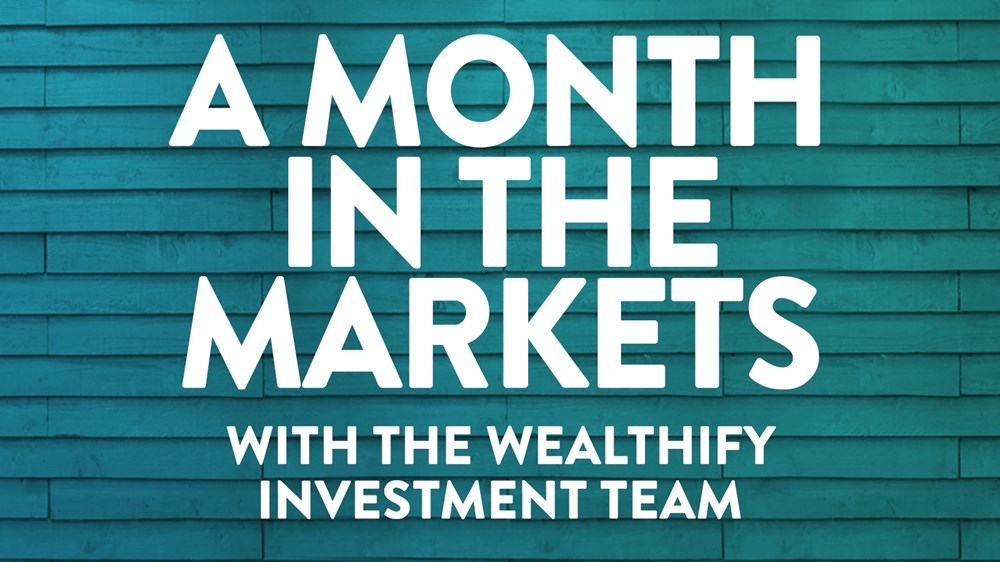October provided a month of twists and turns for investors, with UK politics taking centre stage for a short period of time. Rishi Sunak was appointed as the third prime minister in three months, while Jeremy Hunt, Chancellor of the Exchequer, reversed many of the previous Chancellor’s tax cuts.
The new budget that is due to be announced later this month is expected to be more restrained. UK government bonds staged a relief rally upon this news, as concerns over borrowing pressures eased.
Inflation and the expectation of future interest rates remains a primary focus of investors across the globe. The combination of high inflation and strong labour markets provides the justification most central banks need to persist with their interest rate increases.
However, global supply chain pressures continue to trend lower, providing some relief to the manufacturing intensive regions.
Data for September (released in October) showed further improvement in the UK labour market, with unemployment falling from 3.6% to 3.5% — the lowest level since 1974. The services sector remained steady, beating estimates that it would shrink —although the manufacturing sector data released was very marginally below expectations. Inflation continues to rise in the UK from 9.9% to 10.1%, which was 0.1% higher than economists predicted.
In the US, a challenging outlook and geopolitical risks both continued to push the US dollar higher, as investors seek safe-haven assets. Inflation dipped slightly from 8.3% to 8.2%, but still higher than the forecasted 8.1%. Recession concerns in the US were alleviated when the Q3 figure was announced as 2.6%, from -0.6%, restarting the clock on the classification of a technical recession.
Manufacturing and service sectors continue to grow, adding 263,000 jobs in September. The unemployment rate improved, dropping from 3.7% to 3.5%, beating the estimates yet again — and providing further support for the Federal Reserve to raise rates.
Europe announced plans to tackle the energy crisis with large fiscal packages and price caps. Gas storage levels in Europe at the end of October were at 92% and are continuing to rise.
This should reduce energy pressures on European demand this winter, particularly with a mild November expected.
Despite the still difficult economic outlook, the European Central Bank (ECB) delivered a 0.75% rate hike in October as inflation continues to increase, from 9.1% in August to 9.9% in September. The unemployment rate remains stable at 6.6%, and services and manufacturing sectors continue to shrink, albeit in line with market expectations.
Markets
The first half of October took its toll on major share markets after improving US unemployment data and higher than expected inflation figures drove the case for greater than expected rate hikes.
The markets recovered into positive territory with the US (7.99%) performance led by energy and bank sectors, with some tech names contributing to the positive rebound.
Japan (6.36%) enjoyed a great month for performance as domestic demand returns and Covid-19 travel restrictions continues to ease.
As Japan’s inflation remains much lower than the rest of the developed world, Japan’s central bank continues to persist with their accommodative monetary policies.
Europe (6.28%), FTSE-250 (4.20%) and the FTSE-100 (2.91%) all ended the month in positive territory, after the fiscal U-Turn in the UK meant most of Liz Truss’s policies in the mini-budget were scrapped.
Emerging markets (-3.16%) and Asia-Pacific (-4.24%) both notably declined, led by China. The Chinese Communist Party Leader and Xi Jinping’s ongoing heavy-handed market and economic intervention is spooking investors, coupled with the strict zero-Covid policies he endorses damaging prospects for economic growth in the region.
Currency
The U-turn from Jeremy Hunt reversed much of the negative currency effects of the mini budget and, as a result, the pound strengthened considerably against the US dollar (2.61%), the euro (1.81%) and the Japanese yen (5.21%). Ongoing central bank action and the expectations of future interest rate changes will be a key factor in the direction of strength for sterling.
The performance of shares denominated in US dollars, euros and yen will have been negatively affected from the strengthened sterling.
Investment type performance breakdown
In our Original Plans, shares (2.98%), bonds (0.90%) and cash equivalents (0.24%) provided a month of relief. The negative performance of property (-0.30%) and infrastructure (-1.71%) exclusively in Original Plans was offset by the superior performance of shares.
We also saw a similar performance in our Ethical Plans, with shares (1.49%) and bonds (1.76%) ending the month in positive territory. The difference in shares between themes stems from the recovery of energy and financial sectors, which are less present in the Ethical Plans as they are typically screened out due to governance and sustainability risks.
Summary with Plan details
Ethical and Original Plans performed relatively well, with all risk levels delivering positive returns over the month. The rebound seen in the shares saw plans with a higher allocation to them outperform those with a higher allocation of bonds. The performance of bonds in our Ethical models resulted in Cautious and Tentative plans marginally outperforming the Ethical Adventurous plans.
Our Investment Team continues to actively monitor the financial markets and their impact on your Plan and are ready to act in your best interests to events as they unfold.
We are continually evaluating new market information and the key market drivers to help keep your Investment Plan on track. It’s important to remember that it’s normal for markets to go up and down, with periods of volatility to be expected when you invest. As always, we continue to look for opportunities to position your investments with the goal of protecting your money and achieving your long-term objectives.
Please remember the value of your investments can go down as well as up, and you could get back less than invested. Past performance is not a reliable indicator of future results.



